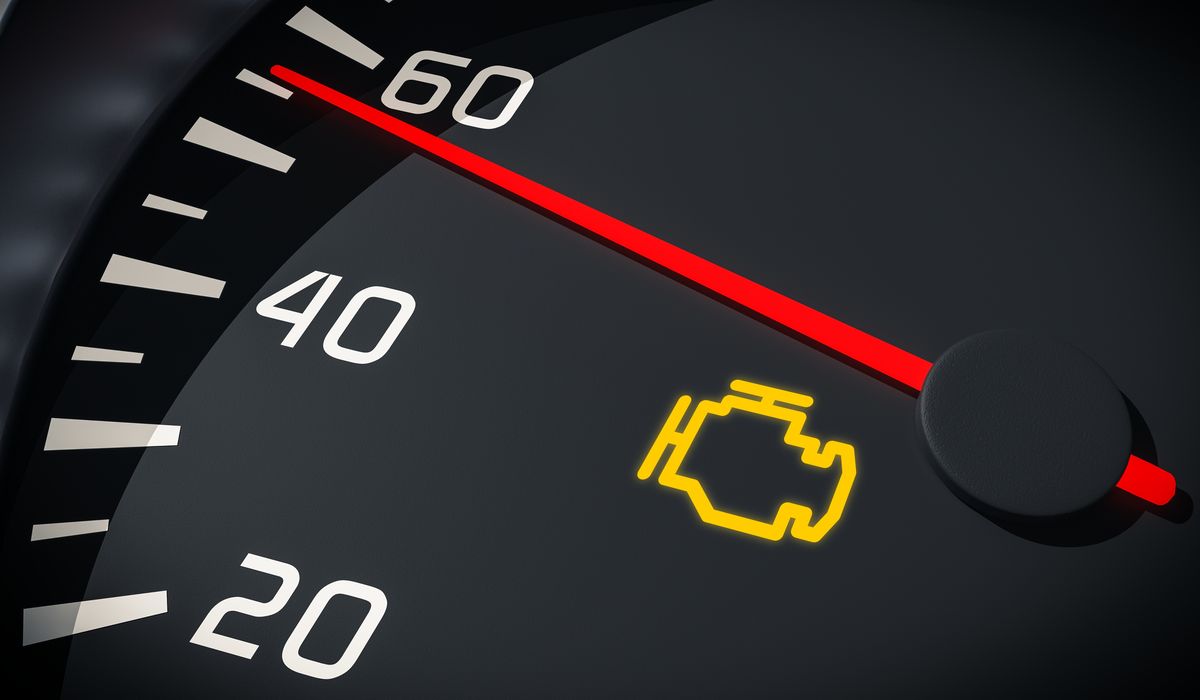When your car’s internal computer identifies a problem with the engine or transmission, it turns on the check engine light. The reasons for a check engine light turning on can range from something minor like a loose gas cap to something more serious like a faulty catalytic converter. It could even be a sign of internal engine failure. Ignoring the problem can turn a potentially quick fix into a costly and time-consuming repair.
Why is your check engine light on?
Common minor and major reasons for a check engine light to turn on include:
Loose gas cap
An internal problem in the engine
An issue with or even theft of the catalytic converter
Faulty spark plug, spark plug wires, or ignition coils
Malfunctioning oxygen sensor
Damaged mass airflow sensor
A bad tank of gas
What to do when your check engine light comes on
Once you notice your check engine light has come on, pay attention to how the car is driving. Does something feel off? If so, reroute yourself to the nearest mechanic to get the car checked out. If the car seems to be running fine, you can check a few things on your own before heading to the mechanic.
There are a couple of simple solutions if your check engine light came on after getting gas. A loose gas cap is one of the most common reasons for the check engine light to go on. Check that your gas cap is screwed on securely and that it’s in good condition.
If you have a tank of bad gas in the car, your check engine light may come on. For example, if your vehicle is designed to run on premium gas (octane grade 91 to 94), the engine may struggle to run on regular gas (octane level 87). You can safely solve this problem by having a professional drain your gas tank. If you must drive until the tank is empty again, this may not cause severe damage, as long your car doesn’t show signs of overheating or poor engine performance.
Do you suspect something else caused your check engine light to turn on? The most foolproof method to check the engine light is to read the diagnostic code in the car’s internal computer. If you have experience working with cars, you can do this at home with an OBD-II scanner. Otherwise, head to your local service station where a mechanic can read the diagnostic code and determine the correct fix.
Why you shouldn’t ignore your check engine light.
The check engine light is sometimes confused with the maintenance required light, although the two are unrelated. The maintenance required light goes on when your car is due for routine service. Examples of routine services include an oil change. However, the check engine light is an indication that something unexpected has occurred.
Some later car models have check engine lights in different colors and modes to help you determine how severe the issue is. If your car has this feature and your check engine light flashes on and off intermittently or glows red, it’s a sign you should get your car to a mechanic as soon as possible. Depending on your car’s make and model, a solid yellow or orange light may indicate lower severity. However, it’s still a sign that you should make an appointment to diagnose and fix the problem.
What are the implications of ignoring your check engine light?
Ignoring the light and putting off a visit to the mechanic could result in more costly and time-consuming issues you’ll have to deal with in the future. The problem that caused your check engine light to turn on in the first place may get worse or impact other aspects of your car’s engine or transmission. Ignoring the problem could lead to more long-term damage that your car insurance may not cover.
You also won’t be able to pass your next car inspection until the check engine light is off and you have resolved the problem. Your best option is to get the issue resolved quickly. If you’re concerned about affording unexpected engine repairs on your car, consider mechanical breakdown insurance.

